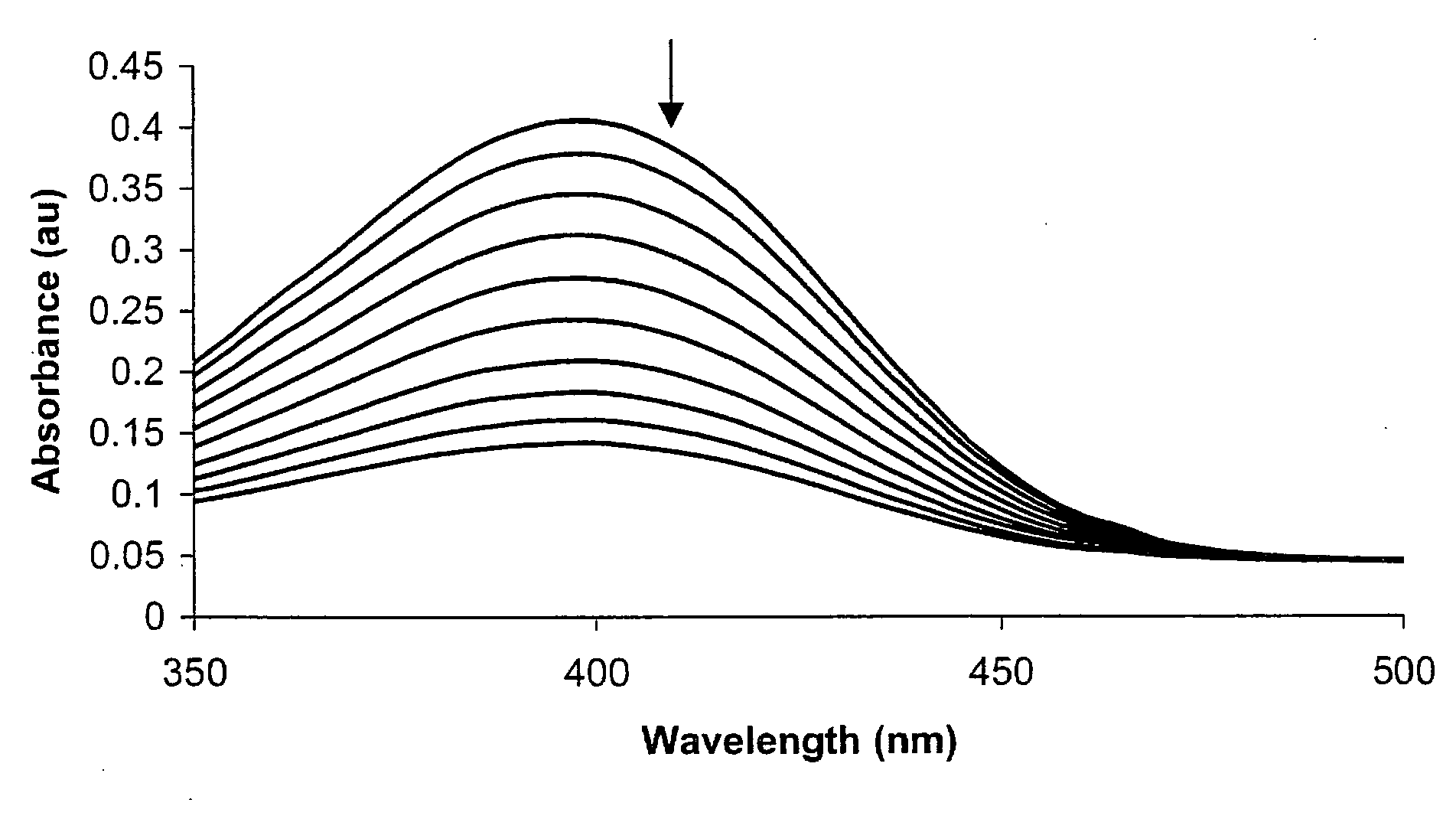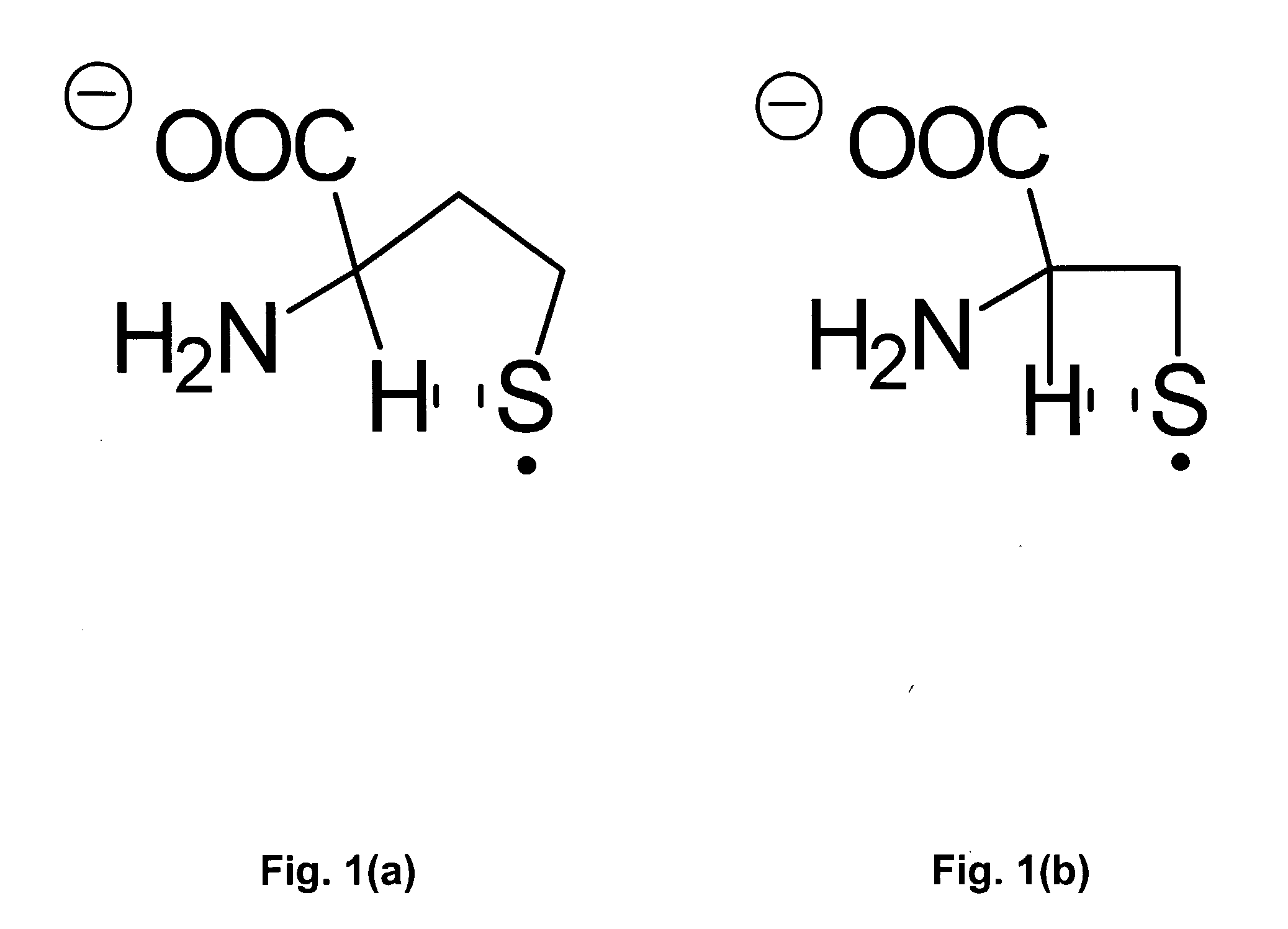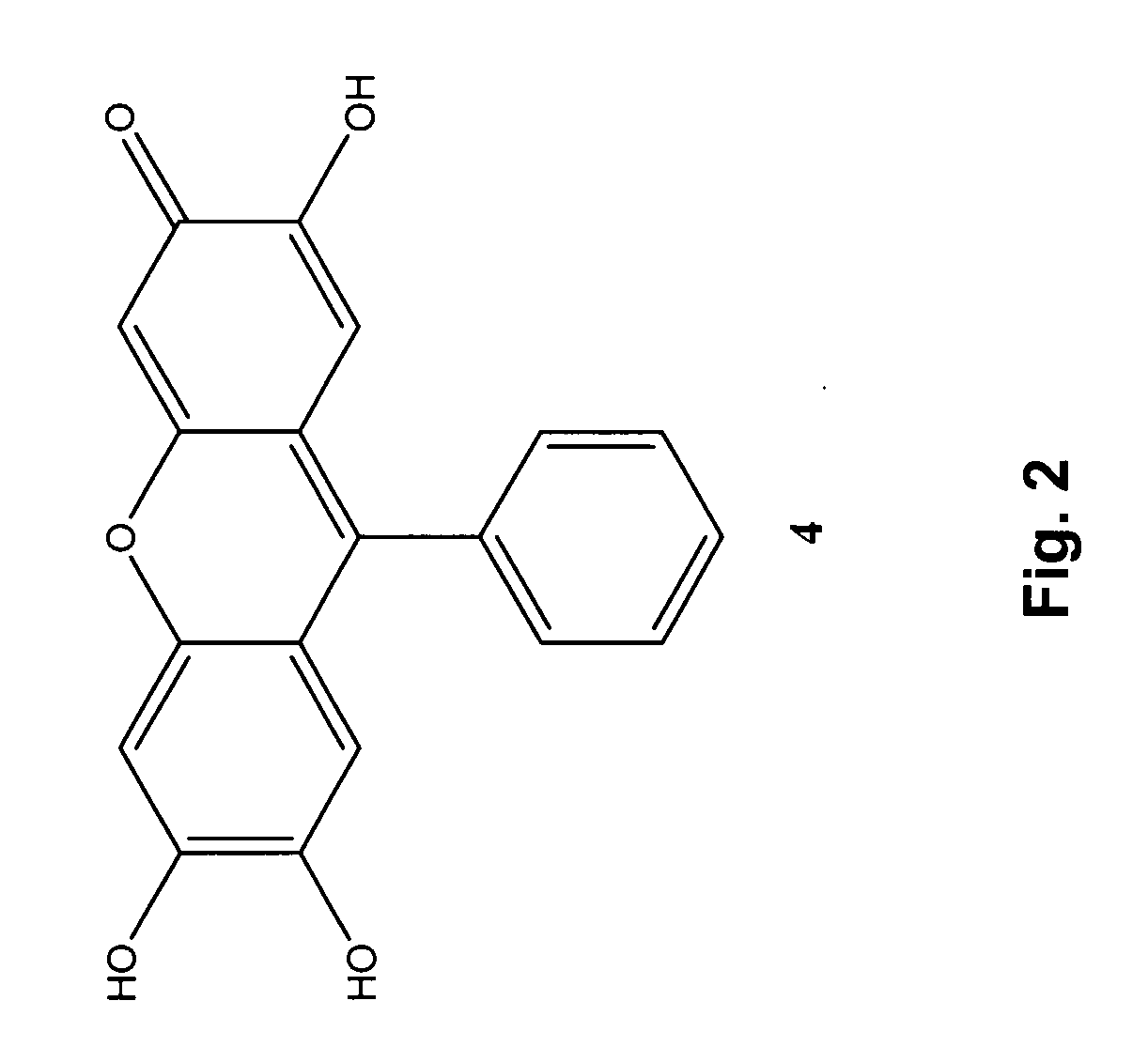Colorimetric and Fluorometric Determination of Homocysteine and Cysteine
- Summary
- Abstract
- Description
- Claims
- Application Information
AI Technical Summary
Problems solved by technology
Method used
Image
Examples
example 1
[0060]For example, upon heating a sample with a colorless solution of MV2+ (e.g., 4.0 mM) at a very gentle reflux (e.g., 5 min, pH 7.5, 0.1 M Tris buffer in H2O, 17 mM Hcy), a visual signal that was selective for Hcy was clearly seen. To the unaided eye, a sample containing 17 mM Hcy turned blue; while a control with a blank sample, a sample with 17 mM Cys, and a sample with 17 mM GSH all remained colorless. Spectroscopically, the color formation can be monitored via the appearance of absorption peaks at 398 nm and at 605 nm.
example 2
[0061]Surprisingly, the color change induced in methylviologen by homocysteine was found to be reversible, simply by varying the temperature. In experiments conducted as otherwise described in Example 1, at temperatures higher than about 40° C. the formation of color was stable, but when the temperature was decreased (below about 40° C.), the color faded in less than a minute. This cycle could be repeated many times: increasing temperature restored the color, and decreasing it caused the color to fade.
[0062]The reversibility of the reaction may be useful, for example, in continuous Hcy monitoring, recycling the sensor material, or both, thereby reducing cost.
example 3
[0063]An alternative method for the selective detection of homocysteine employs fluorone black, Compound 4. (See FIG. 2.) Following the addition of a thiol (Hcy, Cys, or GSH) to a solution of Compound 4 (1.0×10−5 M) in 70% MeOH / H2O (phosphate buffer, H2O, pH=7.3), an increase in absorbance occurred at 510 nm at room temperature (analysis after 5 min). The absorbance increase was greatest for Hcy as compared to equimolar amounts of the other two biothiol analytes. Amino acids lacking thiol functionality, such as L-alanine, L-arginine, L-glutamine, glycine, L-lysine, L-methionine, L-serine, and L-threonine, did not produce substantial spectral changes at 510 nm as compared to solutions of Compound 4 without analyte. Note in particular that methionine, which contains a sulfur atom but not a thiol group, did not produce a substantial spectral change at 510 nm.
[0064]We have discovered that potential interferences may be minimized, and outstanding selectivity achieved, by the addition of ...
PUM
 Login to View More
Login to View More Abstract
Description
Claims
Application Information
 Login to View More
Login to View More - R&D
- Intellectual Property
- Life Sciences
- Materials
- Tech Scout
- Unparalleled Data Quality
- Higher Quality Content
- 60% Fewer Hallucinations
Browse by: Latest US Patents, China's latest patents, Technical Efficacy Thesaurus, Application Domain, Technology Topic, Popular Technical Reports.
© 2025 PatSnap. All rights reserved.Legal|Privacy policy|Modern Slavery Act Transparency Statement|Sitemap|About US| Contact US: help@patsnap.com



